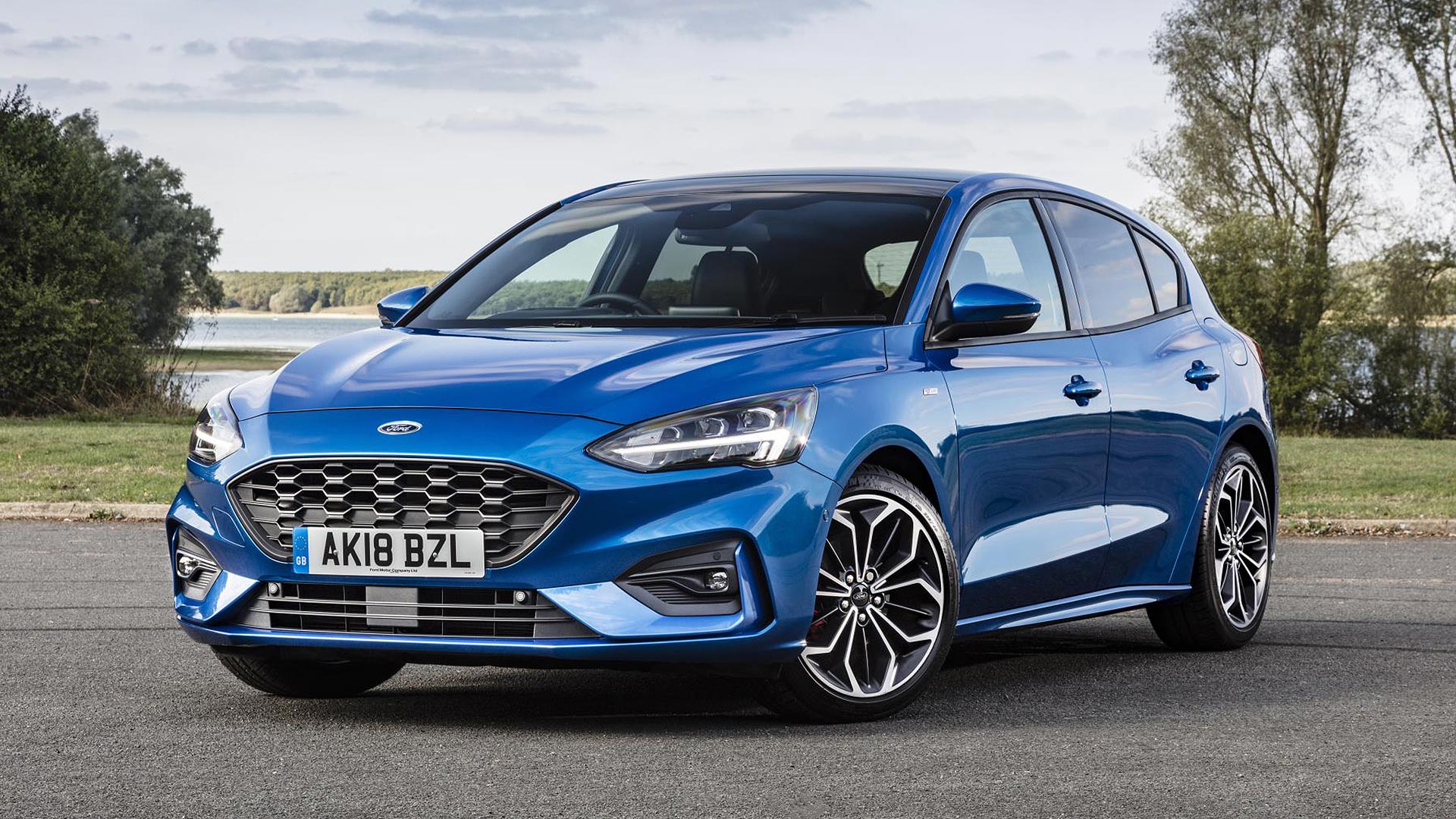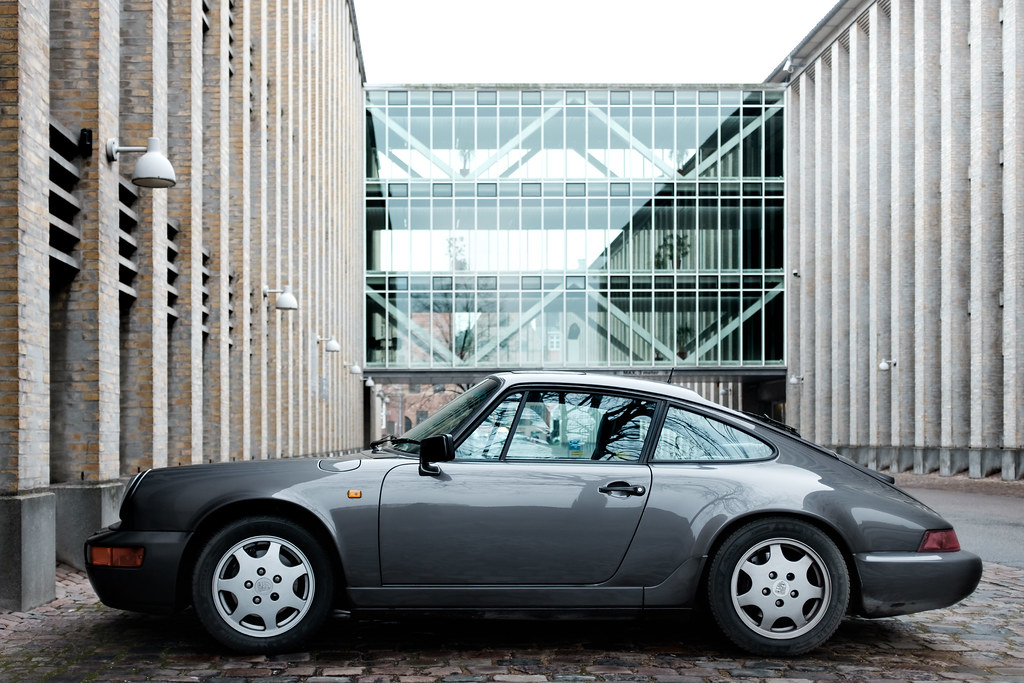
The roar of an engine, the gleam of chrome, the unmistakable silhouette cruising down a boulevard – cars are more than just metal and rubber; they’re woven into the fabric of our lives, our memories, and our culture. But what happens when these mechanical marvels, once celebrated and ubiquitous, simply vanish from our streets? The automotive world, in its relentless pursuit of innovation and market dominance, is a graveyard of brilliant ideas that, for one reason or another, just never quite caught on. It’s a fascinating, sometimes heartbreaking, testament to ambition and the fickle hand of fate.
Some of these vehicles were trailblazers, visionary designs born decades ahead of their time, only to be kneecapped by financial woes, corporate battles, or global crises. Others were simply misunderstood, their unique charms lost on a market not yet ready for their genius. They represent forgotten chapters in design and engineering, often showcasing solutions and features that would eventually become mainstream, but only after their original pioneers had already faded into obscurity. These aren’t just old cars; they’re stories, legacies, and sometimes, cautionary tales about the road not taken, or perhaps, the road *too* far ahead.
Today, we’re taking a deep dive into the mysterious disappearances of classic sedans that once roamed our roads. These aren’t just cars that stopped being produced; these are models that truly vanished, leaving behind a void and a lingering sense of nostalgia for those who remember them. We’ll explore their innovative spirits, their tragic downfalls, and ponder the question that haunts every enthusiast: where did they all go? Get ready to rev your engines, because we’re about to peel back the layers of history on some truly unforgettable machines, kicking off with a legendary tale of ambition and woe.
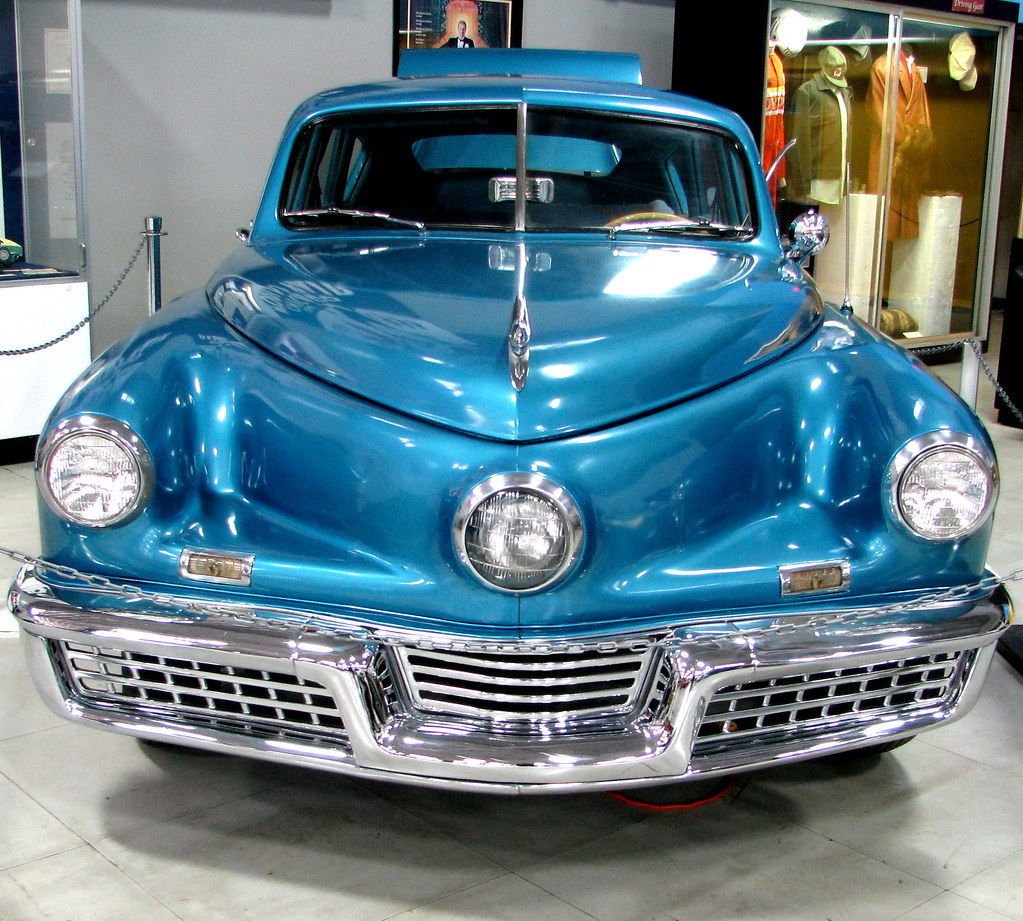
1. **Tucker 48**: Talk about a car that was born with a bang and then, well, vanished in a puff of smoke! Preston Tucker’s ambitious sedan was an absolute game-changer, a true visionary piece of engineering that made its contemporaries look like horseless carriages. It was packed with safety features that were light-years ahead of its time, showcasing a profound concern for occupant well-being that was virtually unheard of in the post-war era. Imagine, a padded dashboard when others were still happy with hard metal, a pop-out windshield designed to prevent injury, and that iconic third headlight! That headlight didn’t just illuminate the road; it actually turned with the steering wheel, anticipating where you were going even before you got there. How cool is that?
This was a car designed for the future, a genuine testament to what a fresh perspective could bring to an industry often resistant to radical change. The sleek lines and revolutionary rear-mounted engine configuration weren’t just about aesthetics; they were about performance, efficiency, and safety. Every curve, every innovation was a direct challenge to the automotive giants of the day, who had grown complacent in their dominance. Tucker wasn’t just building a car; he was building a dream, a promise of a safer, more advanced American automobile.
Unfortunately, dreams are often fragile, especially when they collide with the harsh realities of corporate power and financial machinations. Only 51 Tucker 48s were ever built, a tragically small number for a car with such immense potential. The ambitious project was ultimately derailed by “financial troubles and regulatory challenges,” a polite way of saying the deck was stacked against this daring independent. It’s a classic tale of the little guy taking on Goliath, and in this case, Goliath landed a knockout blow.
The swift and brutal end to the Tucker dream left a lingering sense of what might have been. Imagine a world where Tucker’s safety innovations became standard decades earlier! But alas, it was not to be. Today, those surviving examples of the Tucker 48 are not just rare cars; they are automotive relics, priceless pieces of history that command astronomical sums at auction. Their scarcity only amplifies their legend, turning each one into a rolling museum piece, a physical embodiment of a future that almost was. They truly were “decades ahead of their time,” and their disappearance from production lines remains one of the greatest ‘what ifs’ in automotive lore.
Read more about: No Room for Rivals: 7 Legendary Performers Who Drew the Line on Shared Spaces
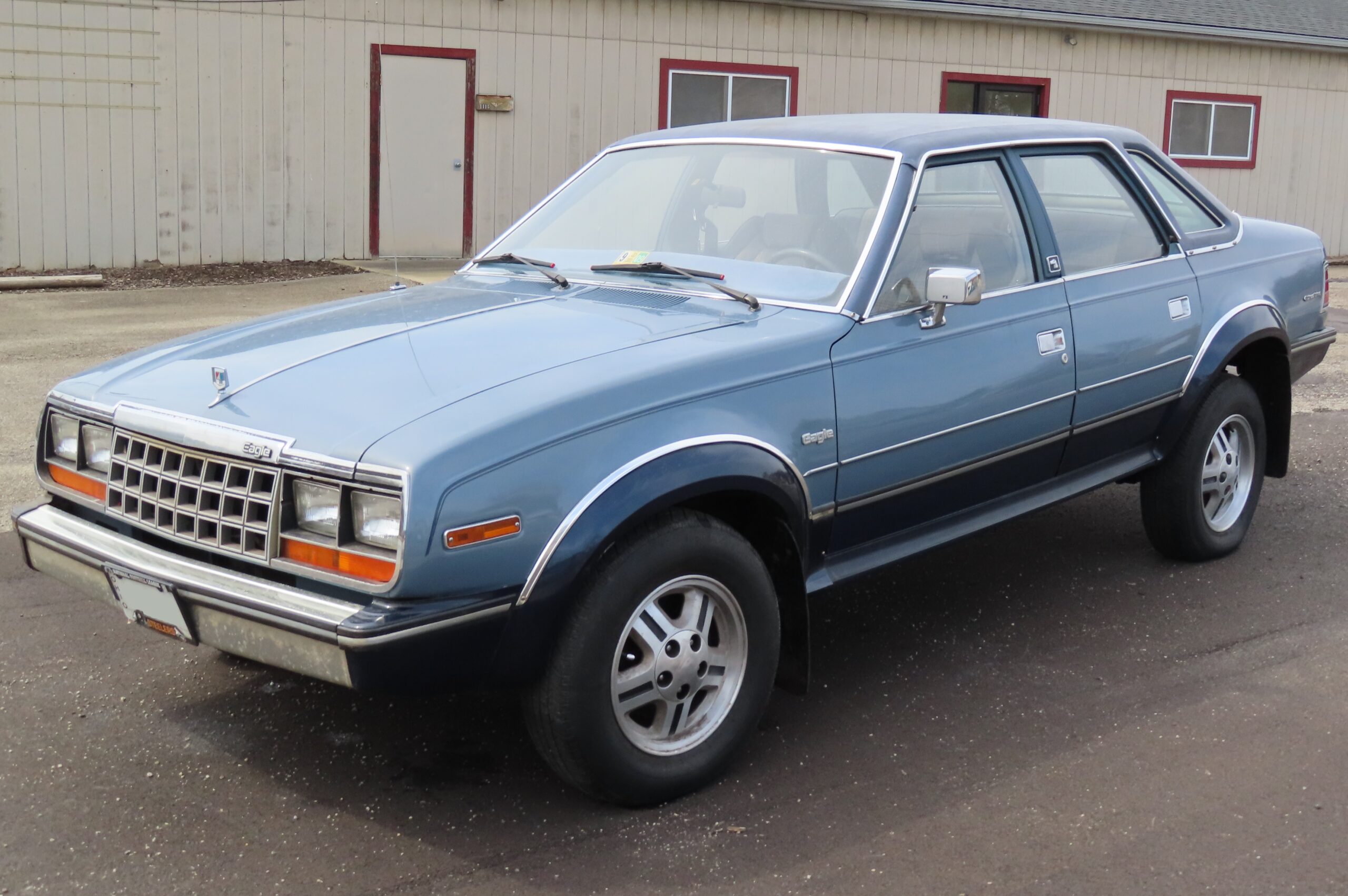
2. **AMC Eagle**: Before the term “crossover” was even a twinkle in a marketing executive’s eye, there was the AMC Eagle. This car wasn’t just ahead of its time; it practically invented a segment that would, decades later, utterly dominate the automotive landscape. What did AMC do? They took a regular passenger car, lifted it, and then slapped on all-wheel drive. That’s it! That simple, brilliant formula, offering “car-like handling with light off-road capability,” was the precise blueprint that would later make companies like Subaru household names. It’s almost infuriating how perfectly they predicted the future.
Think about it: in an era of land yachts and burgeoning muscle cars, AMC offered something genuinely different – a vehicle that could tackle snowy driveways, muddy campsites, and uneven dirt roads without sacrificing the comfort and familiarity of a sedan. It was the Swiss Army knife of family vehicles, a versatile workhorse that could handle the daily commute and then pivot seamlessly to weekend adventures. The Eagle was practical, capable, and utterly unique, truly bridging the gap between traditional cars and rugged utility vehicles. It deserved a pedestal, not a footnote.
Yet, for all its groundbreaking innovation, the AMC Eagle never quite soared to the heights it deserved. The cold, hard truth is that “AMC’s financial struggles meant the innovative concept never got the marketing push it deserved.” It was a brilliant idea trapped in a company struggling to stay afloat, a tragic victim of circumstances entirely beyond its control. Imagine if a major automaker with deep pockets had launched something similar; the automotive world might look very different today. The Eagle was the right car at the wrong time, and with the wrong badge.
Its disappearance from the mainstream was a slow fade, rather than a sudden halt. The car was undeniably a cult classic, revered by those who understood its genius, but it simply couldn’t overcome the systemic challenges faced by its parent company. It paved the way for every Subaru Outback, every Audi Allroad, and countless other soft-roaders that populate our roads today. So, next time you see a modern crossover, tip your hat to the forgotten pioneer – the AMC Eagle. It vanished from mass production, but its DNA is everywhere.
Read more about: 9 Obscure Sedans That Boomers Loved: Unearthing the Relics Modern Drivers Overlook
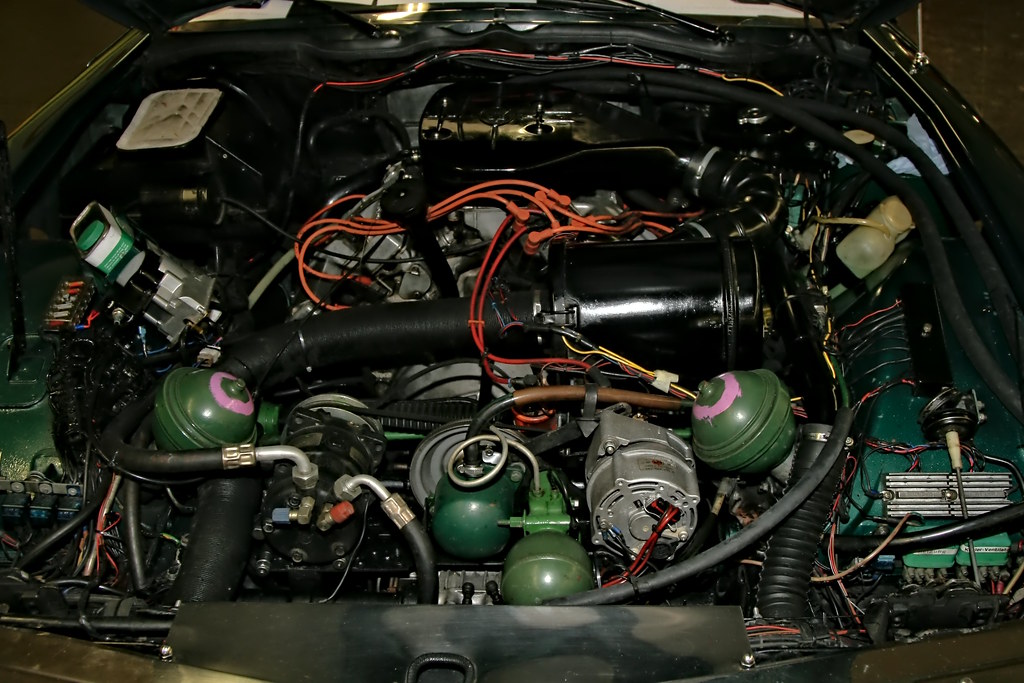
3. **Citroën SM**: Oh, the Citroën SM! If ever a car embodied pure, unadulterated automotive audacity, it was this magnificent French grand tourer. This wasn’t just a car; it was a rolling sculpture, a technological marvel, and an absolute statement piece that defied convention. Imagine combining “Citroën’s advanced hydraulic suspension with a Maserati V6 engine” – it’s like pairing haute couture with a rocket engine! This fusion created “one of the most technologically sophisticated cars of its era,” a machine that was equally at home gliding across the French countryside or tearing up the autobahn.
The driving experience in an SM was, by all accounts, nothing short of otherworldly. That legendary self-leveling suspension didn’t just absorb bumps; it made them vanish, creating a ride quality that felt like floating on a cushion of air. Coupled with its variable-assist steering, which adapted to speed and provided incredible feedback, the SM offered a sensation unlike any other car before or since. It was a vehicle that felt alive, intuitive, and strangely futuristic, even when parked. It was a car that whispered luxury but roared performance, a truly unique blend of characteristics that few manufacturers even dared to dream of.
So, with all this brilliance, why did this legend disappear so quickly? The answer, as is often the case with such complex machines, is multi-faceted and rooted in unfortunate timing. “According to Autoweek, political tensions between France and Italy and the 1973 oil crisis cut short what could have been a legendary luxury car.” The geopolitical climate and a sudden, crippling energy crisis hit the SM particularly hard. A high-tech, fuel-thirsty grand tourer was a tough sell when gas prices skyrocketed and economic uncertainty loomed large. It was a masterpiece caught in a perfect storm.
The SM’s brief production run, from 1970 to 1975, makes it an incredibly rare sight today, but its legend only continues to grow. It’s a car that inspires fervent devotion among its owners and admirers, a testament to its singular vision and engineering excellence. It dared to be different, to push boundaries, and to offer a driving experience that was truly unique. Its disappearance wasn’t a failure of design or engineering, but a testament to the unpredictable nature of the market and global events. The Citroën SM remains an icon, a beautiful enigma that vanished too soon, leaving us all wondering what further marvels it might have delivered if given more time.
Read more about: Gear Up for Goodbye: 7 Beloved Models Waving Farewell to Manual Transmissions in 2025

4. **Saab 9000 Aero**: Ah, Saab! The very name conjures images of quirky design, unbreakable safety, and turbocharged thrills. And when it came to mixing all those ingredients into a truly delectable performance sedan, the Saab 9000 Aero was simply magnificent. This Swedish powerhouse wasn’t just a car; it was a sophisticated sledgehammer, capable of delivering serious punches with an elegant, understated style that defined the Saab ethos. It “packed a turbocharged engine producing serious power while maintaining Saab’s reputation for safety and quirky design.” It was a car for those who knew, a true enthusiast’s delight.
Don’t let its seemingly sedate appearance fool you; the 9000 Aero was a wolf in sensible Swedish clothing. This executive express had the grunt to back up its badge, boasting performance figures that could genuinely embarrass many purebred sports cars of its era. Crucially, it did this without ever compromising on practicality or comfort. Imagine being able to “outrun most sports cars of its day while carrying four adults in comfort.” That’s the kind of performance that makes you grin from ear to ear, knowing you have a secret weapon under the hood, ready to unleash at a moment’s notice.
The 9000 Aero truly hit its stride in the mid-1990s, cementing its reputation as a performance giant in a surprisingly subtle package. However, like so many great Saabs, its destiny was tragically intertwined with the tumultuous fortunes of its parent company. “Saab’s financial troubles and GM’s corporate restructuring ended production just as the car was hitting its stride.” It’s a familiar and heartbreaking refrain for Saab aficionados: just as the brand found its sweet spot, corporate decisions or economic pressures would pull the rug out from under it.
The disappearance of the 9000 Aero from showrooms wasn’t just the end of a model; it was a symptom of the larger challenges that would ultimately lead to Saab’s demise. It left a gaping hole for drivers who appreciated its unique blend of power, safety, and individuality. Today, finding a well-preserved 9000 Aero is like unearthing automotive treasure, a powerful reminder of a brand that dared to be different and produced truly exceptional machines. Its vanishing act only serves to highlight its enduring appeal and the passion it still ignites among car lovers worldwide.
Car Model Information: 2025 Audi Q7 55 Premium Plus
Name: Saab 9000
Caption: 1995 Saab 9000 Aero saloon
Manufacturer: Saab Automobile
Production: 24 May 1984 – 6 May 1998
Assembly: Trollhättan,Uusikaupunki
Designer: Björn Envall,Giorgetto Giugiaro
Class: Executive car
BodyStyle: saloon (car),hatchback
Platform: Type Four platform
Related: Alfa Romeo 164,Fiat Croma,Lancia Thema
Layout: Front-engine, front-wheel drive layout
Engine: ubl
Transmission: ZF 4HP18 transmission
Wheelbase: 2672 mm
Abbr: on
Length: CC: {{convert,4620,mm,in,1,abbr=on
Width: 1763 mm
Height: 1420 mm
Weight: convert
Successor: Saab 9-5
Categories: 1990s cars, All Wikipedia articles written in British English, All articles with unsourced statements, Articles with short description, Articles with unsourced statements from April 2023
Summary: The Saab 9000 is an automobile produced by the Swedish company Saab from 1984 to 1998. Representing the company’s foray into the executive car scene, it was developed as a result of the successes of the turbocharged 99 and 900 models. The 9000 remained in production until May 1998 and was replaced by the 9-5 in late 1997, although some final cars were produced into 1998. The Saab 9000 was only available with petrol engines, in two different 5-door hatchback designs or as a 4-door notchback.
Get more information about: Saab 9000
Buying a high-performing used car >>>
Brand: Saab Model: 9000 Aero
Price: $55,675 Mileage: 20,490 mi.
Read more about: The Road to Ruin: 15 Foreign Fails That America Just Couldn’t (or Wouldn’t) Understand
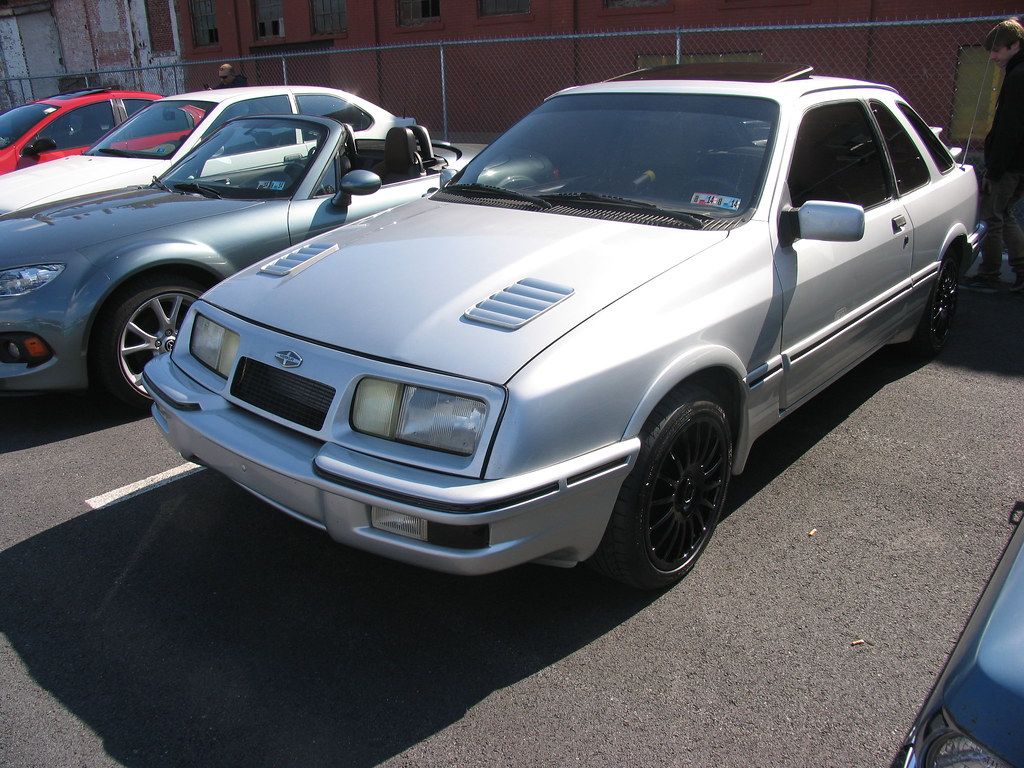
5. **Merkur XR4Ti**: Now here’s a car that truly embodied the spirit of a grand experiment – and, unfortunately, a cautionary tale about market readiness. The Merkur XR4Ti was Ford’s ambitious attempt to bring a slice of sophisticated European driving dynamics to the American masses. It was “Ford’s attempt to bring European sophistication to American showrooms,” essentially a turbocharged sports sedan based on the well-regarded Sierra XR4i from across the pond. It looked different, it felt different, and it absolutely drove different. This wasn’t your grandpa’s Ford, that’s for sure.
From the moment you laid eyes on it, the XR4Ti stood out. Its most distinctive feature, that bold “rear window spoiler,” wasn’t just for show; it hinted at the car’s aerodynamic prowess and its focus on performance. Underneath the skin, the “advanced suspension setup offered European handling dynamics” that were sharp, engaging, and genuinely rewarding to drive. It was agile, responsive, and far more buttoned-down than many of its American contemporaries. This was a car that spoke a different automotive language, one of precision and spirited road manners, rather than just straight-line grunt.
Despite its engineering merits and unique appeal, the Merkur XR4Ti never truly captured the hearts, or wallets, of American buyers. The problem wasn’t the car itself, but a combination of perception and logistical hurdles. “American buyers weren’t ready for the brand,” which was an entirely new, somewhat awkwardly named division created just for this car and its stablemate. Furthermore, “Ford’s dealer network struggled to service the unusual imported technology,” leading to frustrations for both owners and technicians. It was a mismatch of product and market, a vision that arrived a bit too early, or perhaps, was just marketed a bit too vaguely.
Its disappearance from the market was swift, a stark lesson in branding and consumer perception. The XR4Ti was gone almost as quickly as it arrived, leaving behind a small but loyal following who appreciated its European charm and turbocharged punch. Today, it’s a rare bird, an automotive curio that represents a fascinating blip in Ford’s history. The Merkur XR4Ti vanished not because it was a bad car, but because it couldn’t quite find its place, serving as a reminder that sometimes, even great engineering needs the right audience and the perfect timing to truly thrive. It’s a shame, because this spirited sedan deserved a longer run.
The automotive world, dear readers, is a relentless beast. It chews up and spits out even the most brilliant of machines, leaving us to wonder about the phantom silhouettes of cars that once promised so much. We’ve already peeled back the curtain on some of these forgotten legends, but the stories of vanished sedans are far from over. Get ready to dive deeper into the mysteries, because the next four entries on our list are equally compelling tales of innovation, ambition, and the cruel hand of fate.
Read more about: The Rise and Fall: A Comprehensive Look at Why Ford Ended the Mercury Brand After 70+ Years

6. **Oldsmobile Aurora**:Ah, the Oldsmobile Aurora. This was GM’s grand gamble, a desperate, yet undeniably elegant, attempt to yank Oldsmobile into the modern era and shed its dusty, ‘your grandpa’s car’ image. Launched in the mid-1990s, the Aurora wasn’t just a rebadge; it was a serious piece of machinery. It boasted a truly unique V8 engine and a sophisticated chassis that promised a blend of comfort and driving dynamics usually reserved for European luxury sedans. This was Oldsmobile trying to make a statement, a bold declaration that it still had some fight left in it.
The Aurora was packed with some of the most advanced technology GM had to offer at the time, wrapped in a design that was understated yet distinctive. Its sleek, aerodynamic lines and elegant interior were a far cry from the boxy, staid sedans Oldsmobile was known for. It aimed squarely at the likes of Lexus and Acura, offering a plush, refined driving experience that genuinely surprised many critics. This was a car that whispered luxury, rather than shouting it, appealing to a demographic that appreciated substance over ostentation.
Despite this critical acclaim and genuine engineering prowess, the Aurora simply couldn’t overcome the immense burden of Oldsmobile’s aging brand image. For too long, the division had been associated with older buyers and conservative styling, making it incredibly difficult to attract the younger, affluent customers the Aurora was designed for. It was a classic case of the product being excellent, but the perception being insurmountable. The market simply wasn’t ready to believe Oldsmobile could build a car this good.
The tragic irony is that just a few years after the Aurora’s debut, the entire Oldsmobile division was discontinued, a victim of GM’s corporate rationalization. The Aurora, a beacon of what Oldsmobile *could* have been, became an unfortunate harbinger of its demise. It vanished not because it was a bad car, but because its parent brand was already on life support, taking a genuinely sophisticated and distinctive sedan down with it. A true shame, and a missed opportunity for GM.
Car Model Information: 2002 Oldsmobile Aurora 3.5L Sedan
Name: Oldsmobile Aurora
Caption: 1997 Oldsmobile Aurora
Manufacturer: Oldsmobile
Production: January 24, 1994 – June 25, 1999,November 1, 1999 – March 28, 2003
ModelYears: 1995–1999,2001–2003
Assembly: Orion Township, Michigan
BodyStyle: sedan (automobile)
Class: Full-size,luxury car
Layout: Front-engine, front-wheel-drive layout
Predecessor: Oldsmobile 98,Oldsmobile 88
Categories: All articles with unsourced statements, Articles with short description, Articles with unsourced statements from January 2023, Cars discontinued in 2003, Cars introduced in 1994
Summary: The Oldsmobile Aurora is a luxury sedan, manufactured and marketed by General Motors from 1994 until 2003 over two generations — sharing platforms with Buick Riviera and using the Cadillac-derived G platform. At the time of production, the Aurora was the flagship vehicle in the Oldsmobile lineup. It originated as the 1989 Oldsmobile tube car concept.
The Aurora replaced the Toronado coupe and eventually the Oldsmobile 98, LSS and Regency in the Oldsmobile range — using V8 and V6 engines. It was equipped with a four-speed automatic transmission.
Get more information about: Oldsmobile Aurora
Buying a high-performing used car >>>
Brand: Oldsmobile Model: Aurora
Price: $4,995 Mileage: 86,818 mi.
Read more about: Timeless Engineering, Iconic Style: Unpacking the Most Significant Cars of the 1940s
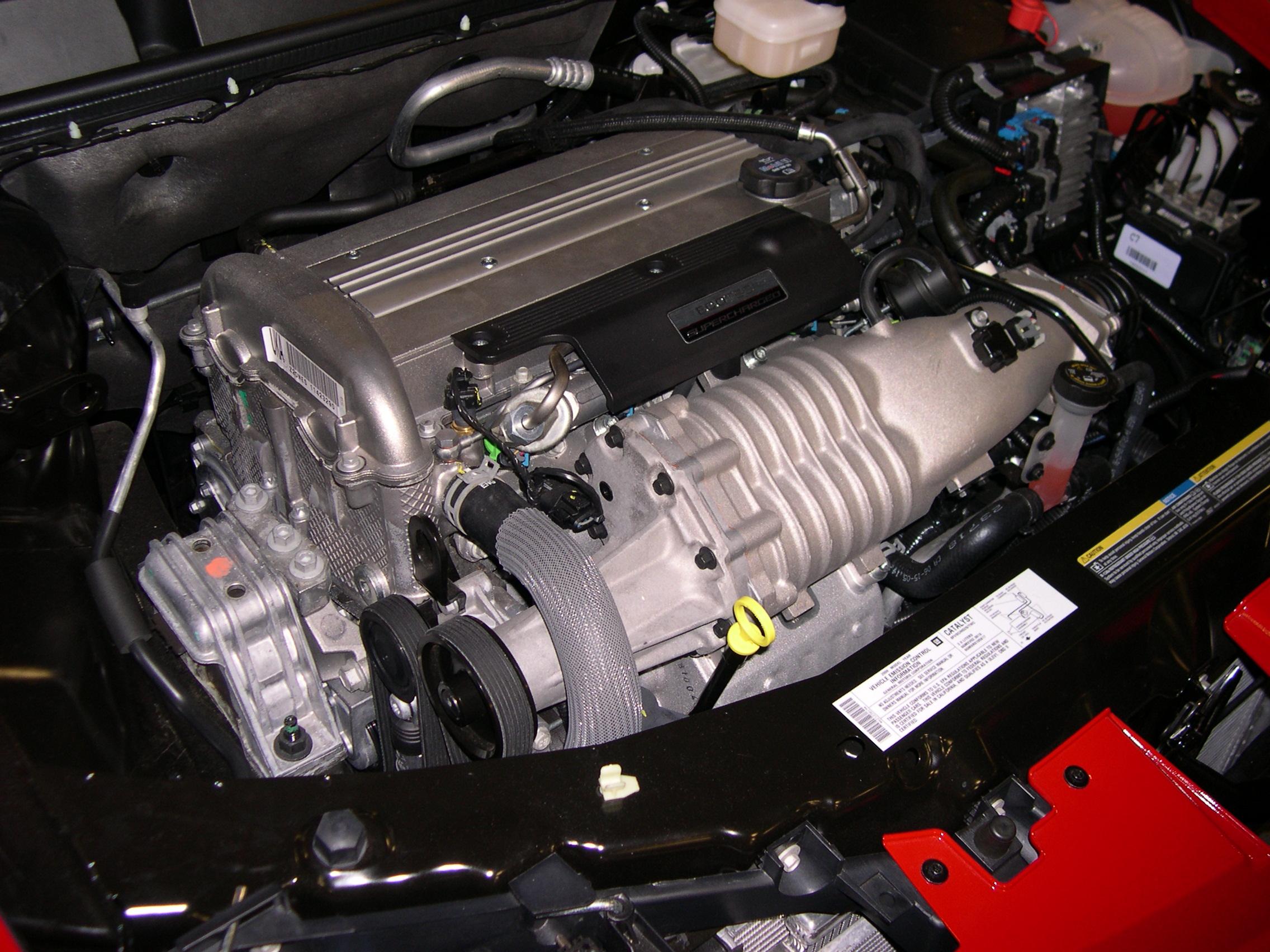
7. **Saturn Ion Red Line**:Remember Saturn? GM’s ‘different kind of car company,’ built on no-haggle pricing and plastic body panels? Well, for a brief, glorious moment, Saturn decided it could also be a *performance* company, and thus the Ion Red Line was born. This wasn’t some soft-touch trim package; this was a compact sedan packing a supercharged engine that was genuinely ready to throw down with cars twice its price. It was a genuine sleeper, a wolf in sheep’s clothing, promising real thrills from an unexpected badge.
Underneath its rather pedestrian, some might even say bland, styling, the Ion Red Line was a serious piece of engineering. Its supercharged Ecotec engine delivered impressive horsepower and torque, propelling the unassuming sedan to speeds that could genuinely embarrass much more expensive sports cars in a straight line. This was Saturn’s audacious, albeit brief, attempt at performance credibility, showing that beneath the beige exterior, a truly hot little machine could reside. It was a testament to what a little forced induction and focused tuning could do.
So, why did this pocket rocket vanish? The Ion Red Line represented a niche within a brand that GM was already struggling to define. As GM moved to ‘mainstream’ the Saturn brand, the unique, enthusiast-focused models like the Red Line were seen as distractions rather than assets. The corporate focus shifted away from these genuinely interesting performance variants towards more mass-market, often less exciting, offerings. It was a clear signal that Saturn’s brief flirtation with serious performance was coming to an end.
The Ion Red Line’s disappearance from showrooms was a quiet one, a casualty of corporate strategy rather than outright failure. It left a void for those who appreciated its blend of unassuming looks and startling performance. Today, these supercharged Ions are sought after by those in the know, a reminder of a moment when Saturn dared to be genuinely exciting. It vanished, but not without leaving behind a legacy of unexpected speed and a cult following who understood its understated genius.
Car Model Information: 2006 Saturn Ion 2
Name: Saturn Ion
Caption: 2005–07 Ion (facelift)
Manufacturer: Saturn Corporation
Production: 2002–March 29, 2007
ModelYears: 2003–2007
Assembly: Spring Hill, Tennessee
Class: Compact car
BodyStyle: sedan (automobile)
Platform: GM Delta platform
Related: Chevrolet Cobalt,Chevrolet HHR,Pontiac G5,Opel Astra
Layout: Front-engine, front-wheel-drive layout
Engine: Liter,GM Ecotec engine#L61,Straight-four engine
Transmission: Getrag,Getrag F23 transmission
Wheelbase: 103.2 in
Abbr: on (Red Line)
Length: 184.5 in
Width: 67.2 in
Height: 57.4 in
Weight: convert
Predecessor: Saturn S-Series
Successor: Saturn Astra
Categories: Articles with short description, Cars discontinued in 2007, Cars introduced in 2002, Commons category link is on Wikidata, Compact cars
Summary: The Saturn Ion is a compact car sold by Saturn between the 2003 and 2007 model years. Based on the GM Delta platform, the Ion replaced the Saturn S-Series in 2002,
and was replaced by the new Saturn Astra in 2008. Production of the Ion ended on March 29, 2007. The Ion was the last Saturn passenger car built at the Spring Hill, Tennessee plant which was originally linked to the company’s branding, with Saturn owners attending “homecoming” events at the plant.
Get more information about: Saturn Ion
Buying a high-performing used car >>>
Brand: Saturn Model: Ion
Price: Not Priced Mileage: 212,146 mi.
Read more about: Gearhead God: A High-Octane Tour Through John Cena’s Legendary American Muscle Car Empire
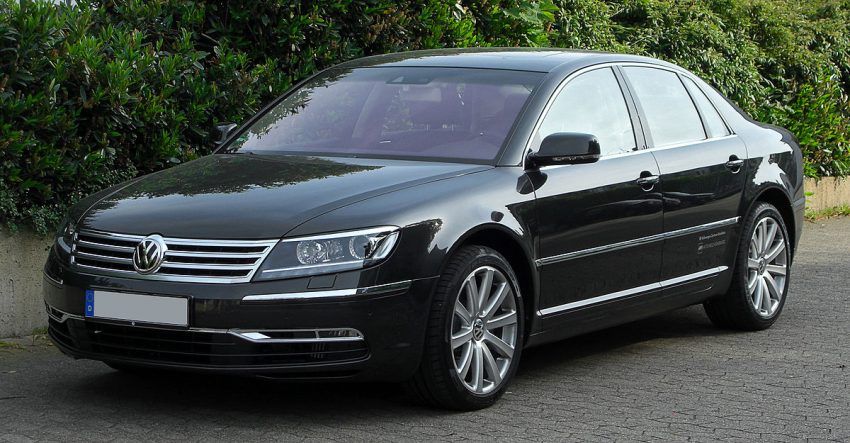
8. **Volkswagen Phaeton**:Now, if there was ever a car that represented the sheer audacity of an automotive giant, it was the Volkswagen Phaeton. This wasn’t just a bigger Passat; this was VW, the ‘people’s car’ company, attempting to build a world-class luxury sedan that could go toe-to-toe with Mercedes, BMW, and even its own sibling, Bentley. It literally shared its platform and many components with the Bentley Continental, a fact that highlights just how serious VW was about this venture. It was an exercise in engineering excess, designed to prove a point.
The Phaeton was a technological tour de force, featuring everything from an optional W12 engine – essentially two narrow-angle V6s joined at the crank – to an advanced air suspension system that provided an otherworldly, supremely comfortable ride quality. The interior was a masterpiece of craftsmanship and materials, utterly devoid of any hint of its humble VW badge origins. It was incredibly refined, quiet, and capable, a true flagship designed to carry passengers in supreme comfort and sophistication, regardless of what was written on the grille.
But herein lay the rub: American buyers simply couldn’t accept paying luxury car prices for a Volkswagen badge. No matter how much genuine luxury, engineering excellence, or Bentley DNA was packed into the Phaeton, the VW emblem on the hood was an insurmountable hurdle. The brand perception, deeply rooted in affordable, practical cars, prevented consumers from seeing the Phaeton for the magnificent machine it was. It was a car that deserved to succeed on merit, but was undone by branding.
The Phaeton’s disappearance from the U.S. market, long before its global production ceased in 2016, serves as a powerful reminder that in the luxury segment, perception can often trump reality. It was a genuine luxury contender, critically acclaimed, yet commercially challenged. It vanished from our streets as a mainstream option, becoming instead a curious automotive footnote, a testament to what happens when ambition clashes with established brand identity. A truly magnificent car that was simply misunderstood.
Car Model Information: 2005 Volkswagen Phaeton V8
Name: Volkswagen Phaeton
Manufacturer: Volkswagen
Production: December 2001 – March 2016
ModelYears: 2003–2016,2004–2006 (North America)
Assembly: Dresden
Class: Full-size car,luxury car
BodyStyle: Sedan (automobile)
Platform: Volkswagen Group D platform#D1s
Related: Audi A8,Bentley Continental GT,Bentley Continental Flying Spur (2005),Porsche Panamera,Audi S8
Layout: Front-engine, front-wheel-drive layout
Engine: List of Volkswagen Group petrol engines#3.2 VR6 24v (EA390),VR6 engine
Transmission: ZF 6HP transmission#6HP 26A,Automatic transmission
Wheelbase: 2881 mm
Abbr: on
Length: 2002–2009:,SWB: {{convert,5055,mm,1,abbr=on
Width: 1903 mm
Height: 1450 mm
Weight: convert
Successor: Volkswagen Phideon
Categories: 2010s cars, All-wheel-drive vehicles, All articles containing potentially dated statements, All articles with dead external links, All articles with unsourced statements
Summary: The Volkswagen Phaeton ( FAY-tən) (Typ 3D) is a full-size sedan/saloon manufactured by the German automobile manufacturer Volkswagen, described by Volkswagen as their “premium class” vehicle. Introduced at the 2002 Geneva Motor Show, the Phaeton was marketed worldwide. Sales in North America ended in 2006 and global sales ended in 2016.
The name Phaeton derives from Phaëton, the son of Phoebus (or Helios) in Greek mythology, by way of the phaeton auto body style and the type of horse-drawn carriage that preceded it.
Production ended in March 2016 and an all-electric second generation was slated to be produced. Starting in April 2017, the Transparent Factory Dresden began assembling the e-Golf instead.
Get more information about: Volkswagen Phaeton
Buying a high-performing used car >>>
Brand: Volkswagen Model: Phaeton
Price: $9,995 Mileage: 110,000 mi.
Read more about: 15 Iconic Rides: Celebrities Who Prove Old School Wheels Get Better With Age!

9. **Mazda RX-8**:And for our final vanishing act, we turn to something truly unique, a car that refused to play by the rules: the Mazda RX-8. This wasn’t just another sedan; it was the last production car to famously house a rotary engine, offering a driving experience that was utterly distinct and unlike anything else on the road. What makes it particularly relevant to our list of ‘sedans’ is its unconventional, yet undeniably practical, ‘freestyle’ four-door configuration, providing access to four proper seats. It was a sports car, yes, but one that dared to offer genuine utility.
The RX-8’s high-revving, naturally smooth rotary engine was its heart and soul, delivering a linear power delivery and an intoxicating soundtrack. Beyond its unique powerplant, the car boasted perfect 50/50 weight distribution and a beautifully balanced chassis, translating into absolutely sublime handling. The genius of the RX-8, however, lay in its practicality. Those rear-hinged ‘freestyle’ doors, which opened wide to reveal a surprisingly spacious back seat, made it genuinely usable for more than just two people. It was a true sports car that didn’t demand you sacrifice your friends or groceries.
Despite its innovative design and phenomenal driving dynamics, the very thing that made the RX-8 so special ultimately contributed to its demise: the rotary engine. While thrilling, the Wankel engine had its drawbacks. Fuel economy concerns and a reputation for maintenance complexity, particularly oil consumption, became significant hurdles for mainstream buyers. As emissions regulations tightened and consumer preferences shifted, the unique rotary concept became increasingly difficult to justify, sealing the RX-8’s fate.
The Mazda RX-8’s vanishing act marked the end of an era for the rotary engine in mass production, leaving a significant gap in the automotive landscape. It was a car that dared to be different, to offer a unique blend of sports car thrill and unexpected practicality. While it may have left our showrooms, its legacy lives on among enthusiasts who cherish its distinctive character and thrilling performance, a testament to a truly innovative machine that burned brightly, but ultimately faded too soon.
Car Model Information: 2006 Mazda RX-8 Base
Name: Mazda RX-8
Manufacturer: Mazda
Production: February 2003 – June 2012
Assembly: Hiroshima
Class: Sports car
BodyStyle: Quad coupé
Related: Mazda MX-5 (NC)
Layout: Front-engine, rear-wheel-drive layout#Front mid-engine, rear-wheel-drive layout
ModelCode: List of Mazda model codes#Model codes
Designer: Ikuo Maeda,Wu-Huang Chin (interior designer)
Engine: Mazda Wankel engine#13B-MSP Renesis,Wankel engine
Powerout: convert
Transmission: Manual transmission,6-speed manual,Jatco JR405E transmission,6-speed automatic
Wheelbase: 2703 mm
Abbr: on
Length: 2003–2008: {{convert,4425,mm,in,1,abbr=on
Width: 1770 mm
Height: 1340 mm
Weight: Manual models: {{convert,1309,-,1373,kg,lb,0,abbr=on
Predecessor: Mazda RX-7
ModelYears: 2003–2012
Doors: Car door#Conventional
Categories: 2010s cars, All Wikipedia articles written in American English, All articles with failed verification, All articles with unsourced statements, Articles with failed verification from November 2019
Summary: The Mazda RX-8 is a sports car manufactured by Japanese automobile manufacturer Mazda between 2003 and 2012. It was first shown in 2001 at the North American International Auto Show. It is the direct successor to the RX-7. Like its predecessors in the RX range, it is powered by a rotary Wankel engine. The RX-8 was available for the 2003 model year in most parts of the world.
The Mazda RX-8 utilizes a rotary Wankel engine, and the non-reciprocating piston engine uses a triangular rotor inside a near oval housing, producing from 141 kW (189 hp) and 164 lb⋅ft (222 N⋅m) of torque, to 177 kW (237 hp) and 159 lb⋅ft (216 N⋅m) of torque from launch.
The RX-8 was discontinued for the 2012 model year without a successor. It was removed earlier from the European market in 2010 after the car failed to meet emissions standards. Due to falling sales from Europe coupled with rising yen prices, Mazda could not justify the continued sale of the RX-8 in other markets. 192,094 units were produced during its nine-year production run.
Get more information about: Mazda RX-8
Buying a high-performing used car >>>
Brand: Mazda Model: RX-8
Price: $7,500 Mileage: 74,800 mi.
Read more about: Beyond the Hype: Why Savvy Celebrity Collectors Are Investing Big in Vintage Japanese Sports Cars and What It Means for Your Portfolio
And there you have it, a journey through the automotive archives, uncovering the stories of nine sedans that, for various reasons, simply vanished from our streets. Each one, in its own way, was a pioneer, a visionary, or a victim of circumstance. From the visionary safety of the Tucker 48 to the misunderstood luxury of the Volkswagen Phaeton, these cars remind us that the road to automotive greatness is often paved with good intentions and brilliant engineering, sometimes cut short by the unpredictable forces of the market, corporate decisions, or global events. They may be gone, but their influence and their captivating stories ensure their legends will never truly fade.

